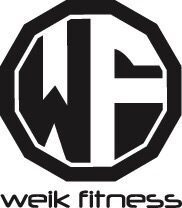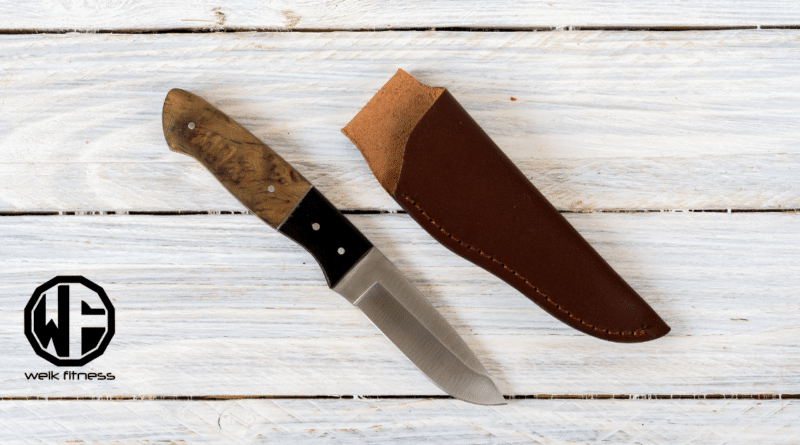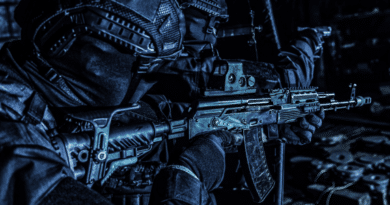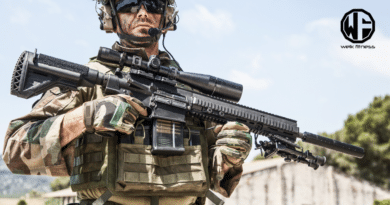How To Carry EDC Fixed Blade Knives
Carrying an EDC fixed blade knife presents its unique set of challenges, particularly when trying to seamlessly integrate it into your daily gear. If you’ve been pondering how to keep your EDC fixed blade knives secure yet readily accessible, you’re not alone.
I was never a big fixed-blade guy when it came to incorporating them into my EDC gear. I felt the hype was odd and preferred my folders over anything. I love my Yojimbo 2, Mini Barrage, Paramilitary 2, and others — but then I started carrying some fixed blades after watching some videos from Taylor Martin of Best Damn EDC on YouTube.
I started out with the Ka-Bar TDI, then moved to the SOCP Dagger, then the Shivworks Clinch Pick — and the obsession began. Lately I’ve had my eye on a Stroup fixed blade but have yet to pull the trigger on acquiring it. Another brand worth checking out that is fairly local to me is PHL Knives. These are more of a defensive blade, similar to that of the TDI and Clinch Pick.
My two current EDC fixed blades that I carry and rotate are the Esee Izula 2 and the Boker Bronco Mini. These blades are studs and aren’t difficult to EDC in a pocket with an Ulti-Clip.
But if you’re battling the thought of running EDC fixed blade knives, I too, have navigated this conundrum, sifting through forums and experimenting with different carry methods myself. While the inside-the-waistband (IWB) approach is a favored method for its concealability, it often falls short in terms of comfort and convenience.
Through my explorations, I’ve uncovered several effective tactics for accommodating fixed-blade knives comfortably and securely on a day-to-day basis. This article will walk you through various options, carrying techniques, and more — from neck carry options that ensure your blade is always within arm’s reach to belt carries that provide swift access without compromising on comfort.
Additionally, we’ll dive into the importance of selecting the right sheath to elevate your everyday carry knives experience further. So, if you’re eager for some handy tips to improve your every day carry, let’s get started!
Table of contents
Key Takeaways
- Always pick the right sheath for your EDC fixed blade knife, as it keeps the knife secure and allows quick, easy access. Whether neck, belt, or pocket carry, a versatile sheath can make carrying comfortable.
- Practice drawing your knife from its carry position to build muscle memory. This helps in situations where you need your knife fast.
- Consider local laws about carrying knives to avoid legal trouble. Each area has different rules on how you can carry blades.
- Positioning your knife properly, like on a belt or around your neck, can provide swift deployment when needed. Adjust based on comfort and accessibility.
- Select a small and discreet fixed blade for everyday carry to ensure it’s both manageable and convenient for daily tasks.
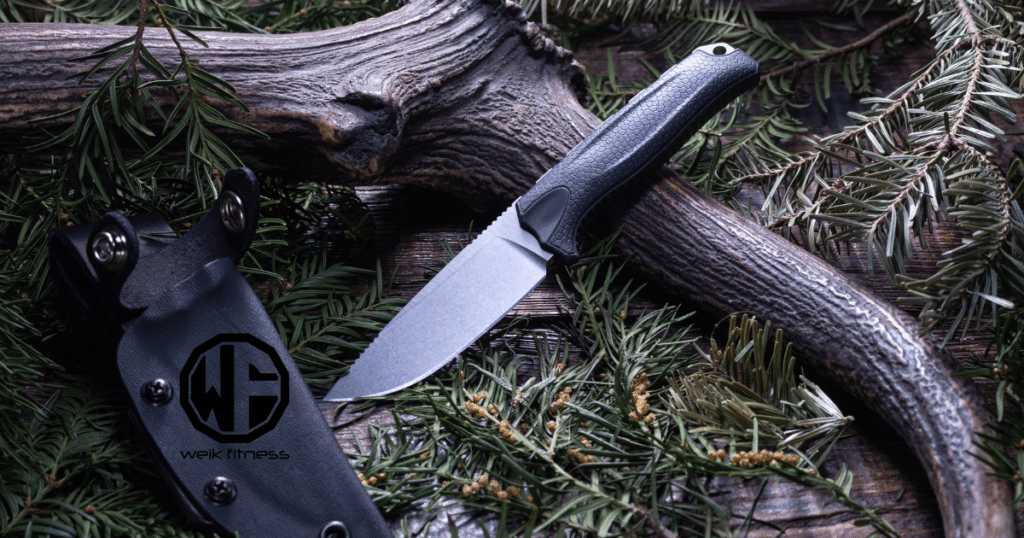
Exploring EDC Fixed Blade Knives
Let’s explore EDC fixed blade knives, their key features, and everyday significance.
Discover essential carry methods like neck, belt, and pocket techniques. Gain tips for securing and comfortable knife carry through appropriate sheath selection and optimizing knife position for quick access.
Key Features and Benefits of the Best EDC Fixed Blades
I carry an EDC fixed blade knife every day. It’s not just a tool — it’s a part of my daily routine, essential for self-defense and everyday tasks (that said, I also carry a folder in my pocket).
1. Quick Deployment: In moments that matter, I can draw my EDC fixed blade faster than any folding knife. This speed can be crucial in self-defense situations or when I need to cut something quickly. The Bradford knives are perfect examples; their design prioritizes easy access.
2. Strength and Reliability: My EDC fixed blade knife has no moving parts, making it more dependable than foldable options. Whether I’m using it for food prep or as a box cutter, I trust its strength. Brands like CRKT and ESEE offer models that have proven their reliability time after time.
3. Versatility: Whether it’s cutting tinder for a fire, opening packages, or peeling fruit, the fixed blade is incredibly versatile. The White River M1 Caper and Bradford Guardian 3 are among small knives with such flexibility in use.
4. Comfortable Carry Options: With neck knife designs or the added small Ulticlip Slim 3.3 on my belt sheath, carrying my knife comfortably all day is easy. Big Idea Design and Boker provide carry solutions that fit different lifestyles.
5. Durability of Materials: Micarta handle scales offer a durable grip that withstands harsh conditions without losing quality. Kydex sheaths protect the knife and ensure it remains secure and accessible.
6. Minimal Maintenance: Since there are fewer parts to worry about, keeping my fixed blade in top condition is simple — just clean and sharpen it regularly.
7. Precision Control: A full grip on the minimalist-designed handle allows for precise control over the blade when cutting or carving. Spyderco Enuff and other similar models give me exceptional command over the task at hand.
This analysis isn’t just about convincing myself; it’s about sharing why everyone who values preparedness should consider carrying EDC fixed blade knives daily.
Significance of EDC Fixed Blade Knives for Everyday Tasks
Carrying an EDC fixed blade knife proves vital for everyday tasks. These compact and discreet knives are the best companions for handling a variety of challenges. From opening boxes to self-protection, their utility is unmatched.
My own experience echoes this fact. Just last week, using my small fixed blade, I made quick work of cutting through thick rope that wrapped around a package — a task where typical box cutters would struggle.
Fixed blades like the Wachtman Eddy 2 have become part of many daily carry essentials because they’re easy to access and comfortable to carry, whether it’s on a belt or around your neck.
The difference in readiness between having a reliable tool at your side versus searching for one cannot be overstated. Whether it’s preparing food outdoors or ensuring safety during late-night walks, these knives illustrate their worth time and again by being both practical and dependable tools in countless situations.
Essential Carry Methods for EDC Fixed Blade Knives
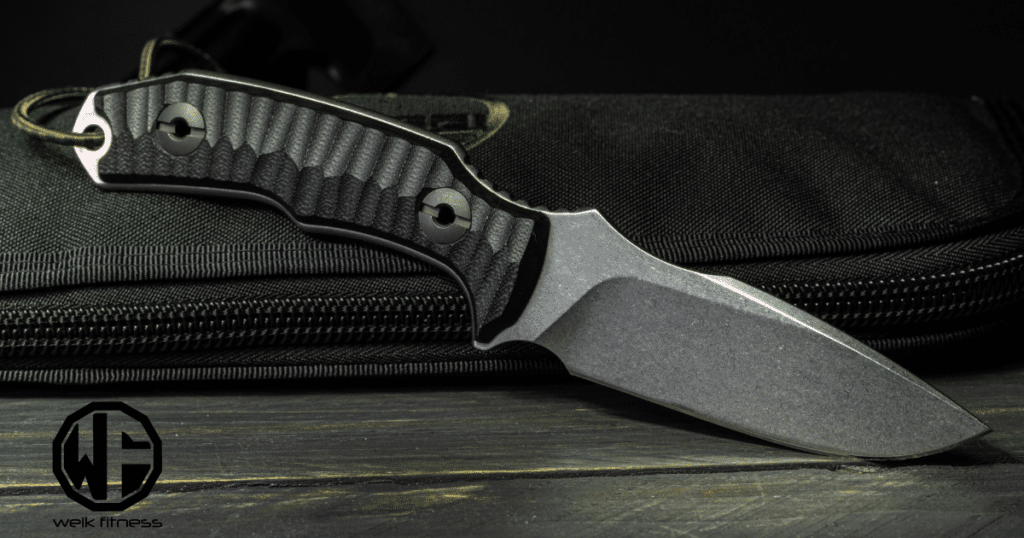
Carrying EDC fixed blade knives comes down to three key methods — neck carry, belt carry, and pocket carry. Neck carrying involves techniques like paracord or chain lanyards for quick access and a discreet yet functional style.
Belt carrying requires sturdy sheaths designed for secure attachment while allowing easy reach. Pocket carrying involves selecting the right clip or slip to ensure comfort and accessibility without sacrificing safety.
These methods offer practical solutions for everyday knife carriage, catering to different preferences and needs.
Neck Carry Techniques
I love carrying my EDC fixed blade knife around the neck when going for walks or hiking. It’s easy to access, and I can keep it hidden under my shirt or jacket.
Here’s how I do it:
1. Choose the right knife and sheath: My go-to is a small knife with a drop-point blade because it’s versatile and easy to carry. The sheath must be secure yet allow me to draw the knife quickly. I found a Kydex sheath leather sheath works best for me, but others might prefer leather for its durability and natural attributes.
2. Use a breakaway cord for safety: I thread a breakaway lanyard through the sheath, which lets the knife hang directly below my collarbone. This setup ensures that if my knife gets caught on something, the cord breaks away without choking me.
3. Adjust the length of the cord for comfort and accessibility: The knife should sit just beneath my sternum, making it easy to grab without looking down. Sometimes, I adjust it shorter or longer depending on what I’m wearing.
4. Practice drawing the knife often: Muscle memory is key here — I make sure I can get a full grip on the knife and pull it straight down swiftly to detach it from its sheath.
5. Test different covers to see what works best for concealment and ease of access: T-shirts work great in most cases, but sometimes, a button-down shirt or jacket offers better concealment without sacrificing accessibility and the ability to deploy the minimalist fixed blade.
6. Keep maintenance in mind: After each carry period, I check both the cord for wear and tear and the sheath to ensure everything is still secure.
7. Think about visibility: While I want my EDC fixed blade to be accessible, I don’t want it visibly dangling around my neck where everyone can see it unless that’s part of my planned attire for wilderness adventures or specific outdoor activities.
8. Consider local laws regarding carrying knives openly or concealed: I always make sure to inform myself about regulations in my area to avoid any legal issues.

Every day, before I want to carry a fixed blade around my neck, these steps help me feel prepared while ensuring safety and compliance with laws.
Belt Carry Techniques
Carrying an EDC fixed blade knife on a belt sheath is all about practicality and accessibility. Here is a detailed guide to belt carry techniques:
1. Choose the Right Sheath: Ensure that the sheath has a button-snap strap and a large loop to accommodate most belt sizes for secure and comfortable carry.
2. Optimize Positioning: Find the most comfortable position for your knife on your belt, ensuring easy access while also maintaining discretion.
3. Consider Concealment Options: Look for sheaths that allow you to tuck the knife discreetly under a shirt or jacket, ensuring both accessibility and concealment.
4. Check Local Regulations: Before opting for belt carry, be sure to familiarize yourself with local laws and regulations regarding carrying knives in public.
5. Practice Drawing Techniques: Regularly practice drawing your knife from its belt sheath to ensure quick and efficient access in any situation.
These techniques can help you incorporate belt carry effectively into your everyday routine, providing easy access to your EDC fixed blade knife while maintaining functionality and discretion. This is my preferred method when wearing my TDI, SOCP Dagger, or Clinch Pick.
Pocket Carry Techniques
Carrying an EDC fixed blade knife in your pocket requires specific techniques to ensure comfort and accessibility.
Here are some pocket carry methods:
- Use a small fixed blade with minimalistic attachments for a flatter profile and easy pocket or pack carry.
- Look for a back pocket carry, best suited for smaller knives, allowing for a natural sitting posture and discreet carry.
- Secure the knife with a suitable sheath to prevent movement and optimize its position for quick access.
- Ensure the overall length of the knife aligns with your pocket size for comfortable daily carry.
- Consider a sheath that can accommodate a pocket clip (such as if you added a small Ulticlip Slim).
Securing and Comfort Tips for EDC Knife Carry
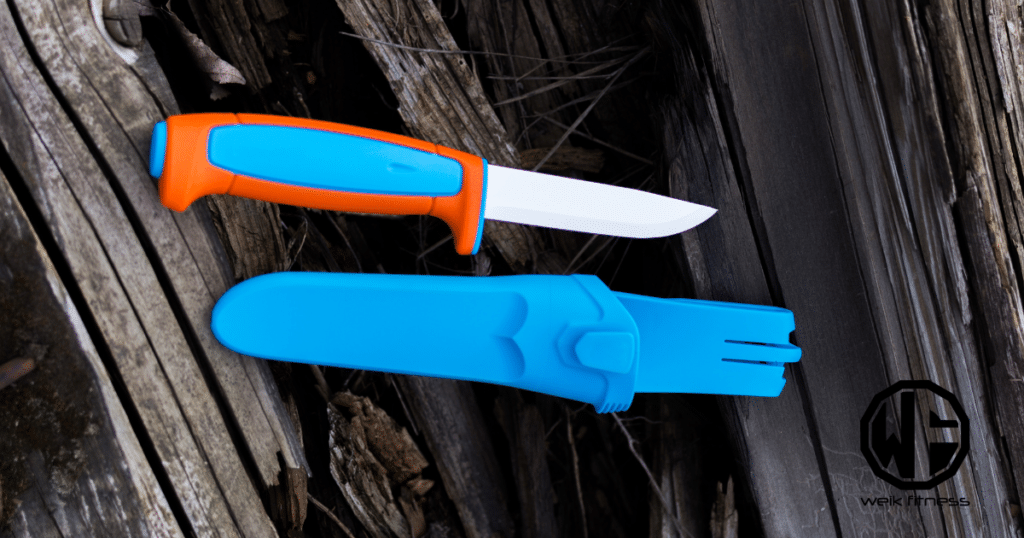
When carrying your EDC fixed blade knife, the right sheath is crucial for secure and comfortable carry. Positioning the sheath optimally allows for quick access to your knife when you need it.
Ensuring that the sheath securely attaches to your belt or gear provides peace of mind while on the move.
1. Selecting the Appropriate Sheath for EDC Fixed Blade Knives
When choosing a sheath for your EDC fixed blade knives, consider its secure hold and easy access. Look for a versatile sheath to accommodate different carry methods, like neck, belt, or pocket.
Carefully evaluating the sheath options will improve your overall EDC experience.
Ensure the sheath securely holds your knife and allows one-handed drawing and re-sheathing. It should also be discreet, comfortable, and adaptable for various carrying needs. By selecting a well-suited sheath, you can optimize both accessibility and comfort throughout your day.
2. Optimizing Knife Position for Quick Access
When it comes to quick access, a fixed blade knife positioned on the belt in an OWB tip-down carry offers the most efficient draw. It ensures a comfortable and practical setup for larger EDC fixed blade knives, providing easy reach and swift deployment when needed.
This method maximizes accessibility while maintaining a secure and unobtrusive placement, making it ideal for self-defense situations or everyday tasks that require immediate use of the knife.
To enhance accessibility even further, attaching a clip to the sheath allows for concealed pocket carry of EDC fixed blade knives. This technique provides additional versatility without compromising comfort or readiness, offering an excellent balance between quick access and discreet carriage.
With these optimized positions in mind, I have found that incorporating these methods into my EDC routine has significantly improved my preparedness and overall experience with carrying fixed blade knives for both utility and defense purposes.
EDC a Fixed Blade That is Easy to Access and Easy to Carry
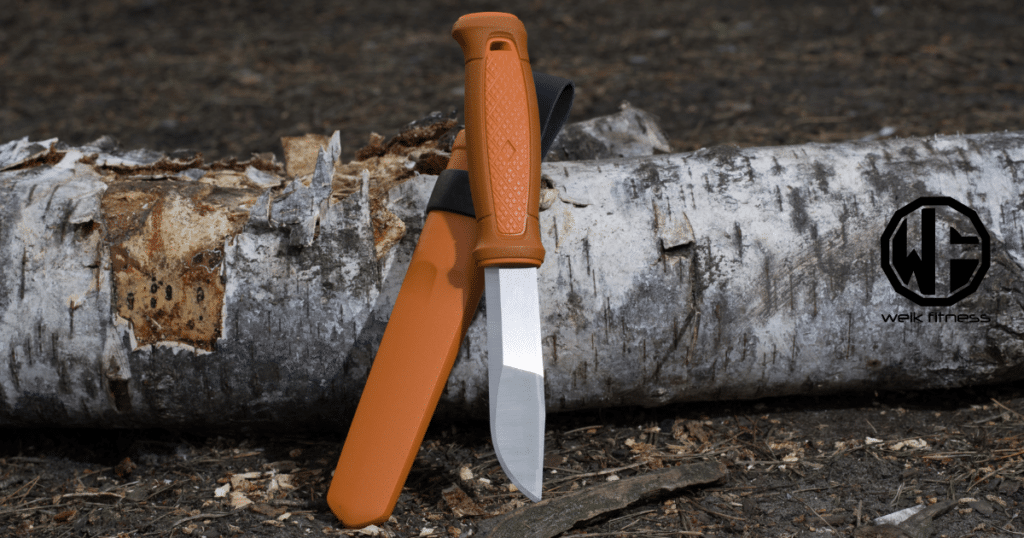
Carrying EDC fixed blade knives can be done in various ways, such as neck carry, belt carry, and pocket carry, each with its benefits and considerations.
Securing the knife properly is essential for safety and easy access. Choosing the right sheath and optimizing the knife’s position are crucial steps to ensure a comfortable and secure carry.
It’s important to consider individual preferences and needs when selecting a method of carrying an EDC fixed blade. Prioritizing comfort and accessibility will enhance the overall experience of using these essential tools.
As a side note to close out this article, if you want to support our website and are in need of any tactical gear (or any product for that matter), anything you purchase using our links below will provide us with a small commission. We don’t charge for our free content and our goal is to keep it that way. We don’t have a Patreon account to put things behind a paywall, nor do we sell pics of our feet on OnlyFans.
If you choose to use the links below and make a purchase (at no additional cost to you), we greatly appreciate your support as it helps us continue to publish free content (like this article) on our website:
- Optics Planet (use code SAS5 at checkout for 5% off)
- Amazon
We have also partnered with CCW Safe. It’s the concealed carry coverage that I personally have for myself and my family in the event we need to defend our lives. Feel free to use our CCW Safe link to sign up and get some coverage to protect yourself and your family.
Also if you have a product you would like us to check out and potentially review, please contact us and let’s discuss.
Latest Articles:
- Sirtuins: Key Regulators in Health and Disease Dynamics
- NAD3: Natural NAD Supplement for Cellular Longevity & Energy
- What Makes the Best Electrolyte Supplement for Athletes?


*Disclosure: This article may contain affiliate links or ads, which means we earn a small commission at no extra cost to you if you make a purchase through these links. These commissions help support the operation and maintenance of our website, allowing us to continue producing free valuable content. Your support is genuinely appreciated, whether you choose to use our links or not. Thank you for being a part of our community and enjoying our content.
PLEASE CONSIDER SHARING THIS ON YOUR SOCIAL MEDIA TO HELP OTHERS LEARN MORE ABOUT THIS TOPIC.
